Autumn Sea |
|||||||||||||||||||||||||
 |
 |
||||||||||||||||||||||||
Knitted sweater in 2 strands DROPS Kid-Silk. The piece is worked top down with relief-pattern, double neck and split in sides. Sizes S - XXXL.
DROPS 245-2 |
|||||||||||||||||||||||||
|
------------------------------------------------------- EXPLANATIONS FOR THE PATTERN: ------------------------------------------------------- GARTER STITCH (worked back and forth): Knit all rows. 1 ridge = knit 2 rows. PATTERN: See diagrams A.1 to A.5. The diagrams show all rows in the pattern from the right side. Choose diagram for your size (applies to A.2, A.3, A.4 and A.5). INCREASE TIP: Increase 2 stitches by knitting 1, purling 1 and knitting 1 in the same stitch. DECREASE TIP (for sleeves): All decreases are worked on a knitted round. Start 2 stitches before the marker-stitch, knit 2 together, knit 1 (marker-stitch), slip 1 stitch knit-wise, knit 1 and pass the slipped stitch over the knitted stitch (2 stitches decreased). ------------------------------------------------------- START THE PIECE HERE: ------------------------------------------------------- SWEATER - SHORT OVERVIEW OF THE PIECE: The front and back pieces are worked separately, back and forth with circular needle and top down. The piece is sewn together. Stitches are knitted up along each armhole and the sleeve cap is worked back and forth then the sleeve is finished in the round with short circular needle/double pointed needles. Stitches are knitted up around the neckline and the double neck is worked in the round to finish. FRONT PIECE: The left shoulder is worked first, then the right shoulder. Stitches are cast on for the neckline. The front piece is continued back and forth over all stitches. REMEMBER THE KNITTING GAUGE! LEFT SHOULDER: Cast on 27-31-33-35-39-43 stitches with circular needle size 4.5 MM = US 7 and 1 strand of each color DROPS Kid-Silk (2 strands). Purl 1 row from the wrong side. Work as follows from the right side: 1 GARTER STITCH – read description above, work A.1 until there are 2 stitches left, work the first stitch in A.1, so the pattern is symmetrical, and 1 garter stitch. Continue this pattern back and forth for 4-4-4-5-5-5 cm = 1½"-1½"-1½"-2"-2"-2" – with the next row from the wrong side: ROW 1 (wrong side): 1 garter stitch, work as before to the end of the row, cast on 1 stitch (towards the neck) = 28-32-34-36-40-44 stitches. ROW 2 (right side): Work the pattern with 1 garter stitch on each side. ROW 3 (wrong side): 1 garter stitch, work as before to the end of the row, cast on 1 stitch = 29-33-35-37-41-45 stitches. ROW 4 (right side): Work the pattern with 1 garter stitch on each side. ROW 5 (wrong side): Work the pattern with 1 garter stitch on each side. Lay the piece to one side. RIGHT SHOULDER: Cast on 27-31-33-35-39-43 stitches with circular needle size 4.5 MM = US 7 and 1 strand of each color (2 strands). Purl 1 row from the wrong side. Work as follows from the right side: 1 garter stitch, work A.1 until there are 2 stitches left, work the first stitch in A.1, so the pattern is symmetrical, and 1 garter stitch. Continue this pattern back and forth for 4-4-4-5-5-5 cm = 1½"-1½"-1½"-2"-2"-2" – with the next row from the right side: ROW 1 (right side): 1 garter stitch, work as before to the end of the row, cast on 1 stitch (towards the neck) = 28-32-34-36-40-44 stitches. ROW 2 (wrong side): Work the pattern with 1 garter stitch on each side. ROW 3 (right side): 1 garter stitch, work as before to the end of the row, cast on 1 stitch = 29-33-35-37-41-45 stitches. ROW 4 (wrong side): Work the pattern with 1 garter stitch on each side. FRONT PIECE CONTINUES: Now join the two shoulders from the right side as follows: Work as before over the 29-33-35-37-41-45 stitches on the right shoulder, cast on 27-27-27-31-31-31 stitches for the neckline, work the 29-33-35-37-41-45 stitches from the left shoulder = 85-93-97-105-113-121 stitches on the needle. Work back from the wrong side with 1 garter stitch on each side (purl the cast-on stitches along the neckline). Now work pattern from the right side as follows: 1 garter stitch, work A.1 as before over the next 14-18-20-20-24-28 stitches, A.2, A.3, start with stitch 2 in A.1 and work A.1 over the next 14-18-20-20-24-28 stitches, 1 garter stitch. Continue this pattern back and forth. When A.2 and A.3 have been worked in height, work A.4 over stitches in A.2 and A.5 over stitches in A.3. When the piece measures 19-20-21-22-23-24 cm = 7½"-8"-8¼"-8¾"-9"-9½" from the cast-on edge on the shoulder, cast on 4-4-6-6-8-10 stitches for the armholes at the end of the next 2 rows = 93-101-109-117-129-141 stitches. Continue back and forth with 1 garter stitch on each side (work the new stitches into the pattern). When A.4 and A.5 are finished in height, 2 stitches have been decreased in the diagram = 91-99-107-115-127-139 stitches. Continue A.1 over all stitches with 1 garter stitch on each side. When the piece measures 46-48-50-52-54-56 cm = 18"-19"-19¾"-20½"-21¼"-22" from the cast-on edge on the shoulder, change to circular needle size 3.5 MM = US 4 and work as follows from the right side: Bind off 1 stitch, knit 1 in both the front and back loop of the next stitch (1 stitch increased), purl 1, * increase 2 stitches in the next stitch – read INCREASE TIP, purl 1, knit 1, purl 1, knit 1, purl 1, knit 1, purl 1 *, work from *-* a total of 10-11-12-13-14-16 times, increase 2 stitches in the next stitch, work rib without increasing until there are 2 stitches left on the row, knit 1 in both the front and back loop of the next stitch (1 stitch increased), 1 garter stitch. You have increased 24-26-28-30-32-36 stitches and there are 114-124-134-144-158-174 stitches on the needle. Turn, bind off 1 stitch, work the rib until there is 1 stitch left, 1 garter stitch = 113-123-133-143-157-173 stitches. Continue the rib (knit 1, purl 1) with 1 garter stitch on each side, until the rib measures 10 cm = 4". Bind off – or work Italian bind-off. The front piece measures approx. 56-58-60-62-64-66 cm = 22"-22¾"-23⅝"-24⅜"-25¼"-26" from the cast-on edge on the shoulder. BACK PIECE: The left shoulder is worked first, then the right shoulder. Stitches are cast on for the neckline. The back piece is continued back and forth over all stitches. LEFT SHOULDER: Cast on 27-31-33-35-39-43 stitches with circular needle size 4.5 MM = US 7 and 1 strand of each color (2 strands). Purl 1 row from the wrong side. Work as follows from the right side: 1 garter stitch, work A.1 until there are 2 stitches left, work the first stitch in A.1, so the pattern is symmetrical, and 1 garter stitch. Continue this pattern back and forth for 2 cm = ¾" – with the next row from the wrong side: ROW 1 (wrong side): 1 garter stitch, work as before to the end of the row, cast on 2 stitches (towards the neck) = 29-33-35-37-41-45 stitches. ROW 2 (right side): Work the pattern with 1 garter stitch on each side. ROW 3 (wrong side): Work the pattern with 1 garter stitch on each side. RIGHT SHOULDER: Cast on 27-31-33-35-39-43 stitches with circular needle size 4.5 MM = US 7 and 1 strand of each color (2 strands). Purl 1 row from the wrong side. Work as follows from the right side: 1 garter stitch, work A.1 until there are 2 stitches left, work the first stitch in A.1, so the pattern is symmetrical, and 1 garter stitch. Continue this pattern back and forth for 2 cm = ¾" – with the next row from the right side: ROW 1 (right side): 1 garter stitch, work as before to the end of the row, cast on 2 stitches (towards the neck) = 29-33-35-37-41-45 stitches. ROW 2 (wrong side): Work the pattern with 1 garter stitch on each side. BACK PIECE CONTINUES: Now join the two shoulders as follows, from the right side: Work as before over the 29-33-35-37-41-45 stitches on the right shoulder, cast on 27-27-27-31-31-31 stitches for the neckline, work the 29-33-35-37-41-45 stitches from the left shoulder = 85-93-97-105-113-121 stitches on the needle. Work back from the wrong side with 1 garter stitch on each side (purl the cast-on stitches on the neckline). Continue with A.1 over all stitches with 1 garter stitch on each side. When the piece measures 19-20-21-22-23-24 cm = 7½"-8"-8¼"-8¾"-9"-9½" from the cast-on edge on the shoulder, cast on 3-3-5-5-7-9 stitches for the armholes at the end of the next 2 rows = 91-99-107-115-127-139 stitches. Continue A.1 back and forth with 1 garter stitch on each side (work the new stitches into the pattern). When the piece measures 46-48-50-52-54-56 cm = 18"-19"-19¾"-20½"-21¼"-22" from the cast-on edge on the shoulder, change to circular needle size 3.5 MM = US 4. Work as follows from the right side: Bind off the 1 garter stitch, knit 1 in both the front and back loop of the next stitch (1 stitch increased), purl 1, * increase 2 stitches in the next stitch – remember INCREASE TIP, purl 1, knit 1, purl 1, knit 1, purl 1, knit 1, purl 1 *, work from *-* a total of 10-11-12-13-14-16 times, increase 2 stitches in the next stitch, work rib without increasing until there are 2 stitches left, knit 1 in both the front and back loop of the next stitch (1 stitch increased), 1 garter stitch. You have increased 24-26-28-30-32-36 stitches and there are 114-124-134-144-158-174 stitches on the needle. Turn, bind off 1 stitch, continue the rib until there is 1 stitch left, 1 garter stitch = 113-123-133-143-157-173 stitches. Continue the rib (knit 1, purl 1) with 1 garter stitch on each side until the rib measures 10 cm = 4". Bind off in the same way as on the front piece. ASSEMBLY-1: Sew the shoulder seams. Sew the side seams inside the 1 edge stitch, from the armholes down to the beginning of the rib (= 10 cm = 4" split on each side). SLEEVES: Start at the bottom of the armhole and knit up from the right side 68-72-76-80-82-86 stitches around the armhole, inside the 1 edge stitch, with short circular needle size 4.5 MM = US 7 and 1 strand of each color (2 strands). Work A.1 back and forth with 1 garter stitch on each side. When the sleeve measures 1-1-2-2-3-4 cm = ⅜"-⅜"-¾"-¾"-1⅛"-1½", join the sleeve and continue A.1 in the round. Insert 1 marker in the first stitch on the round. When the sleeve measures 6-6-8-7-9-11 cm = 2⅜"-2⅜"-3⅛"-2¾"-3½"-4⅜", decrease 2 stitches under the sleeve – read DECREASE TIP. Decrease like this every 4-3½-3-3-2½-2 cm = 1½"-1¼"-1⅛"-1⅛"-1"-¾" a total of 9-10-11-12-12-13 times = 50-52-54-56-58-60 stitches. Work until the sleeve measures 41-40-40-40-38-37 cm = 16⅛"-15¾"-15¾"-15¾"-15"-14½". There is approx. 10 cm = 4" left; try the sweater on and work to desired length before the rib. Change to double pointed needles size 3.5 MM = US 4 and work the next round as follows: Knit 1, purl 1, knit 1, purl 1, * increase 2 stitches in the next stitch – remember INCREASE TIP, purl 1, knit 1, purl 1, knit 1, purl 1, knit 1, purl 1 *, work from *-* a total of 5-5-5-6-6-6 times, increase 2 stitches in the next stitch, work rib to the end of the round without increasing. You have increased 12-12-12-14-14-14 stitches = 62-64-66-70-72-74 stitches. Continue the rib (knit 1, purl 1) for 10 cm = 4". Bind off in the same way as the front and back pieces. The sleeve measures approx. 51-50-50-50-48-47 cm = 20"-19¾"-19¾"-19¾"-19"-18½" from the knitted-up stitches. Work the other sleeve in the same way. ASSEMBLY-2: Sew the openings at the bottom of the armholes – see sketch. NECK: Use short circular needle size 3.5 MM = US 4 and 1 strand of each color (2 strands). Start by one shoulder seam and knit up from the right side 80 to 90 stitches around the neck. Work rib in the round (knit 1, purl 1) – making sure the rib matches the stitches on the front piece. Bind off a little loosely when the neck measures 12-12-13-13-14-14 cm = 4¾"-4¾"-5⅛"-5⅛"-5½"-5½". Fold the neck double to the inside and sew down. To avoid the neck being tight and rolling outwards, it is important that the seam is elastic. |
|||||||||||||||||||||||||
Diagram explanations |
|||||||||||||||||||||||||
|
|||||||||||||||||||||||||

|
|||||||||||||||||||||||||
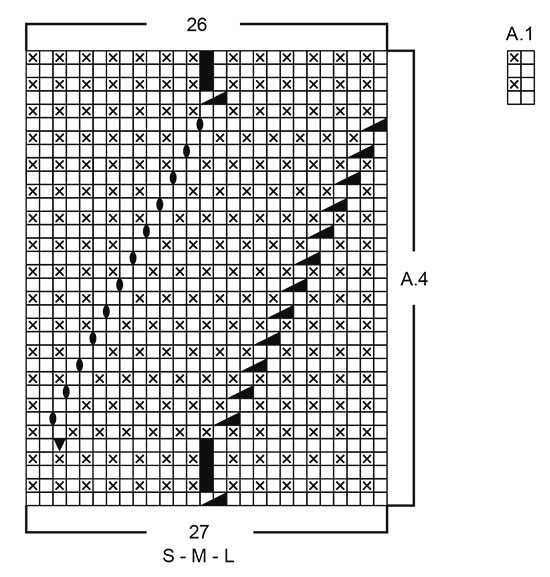
|
|||||||||||||||||||||||||

|
|||||||||||||||||||||||||

|
|||||||||||||||||||||||||
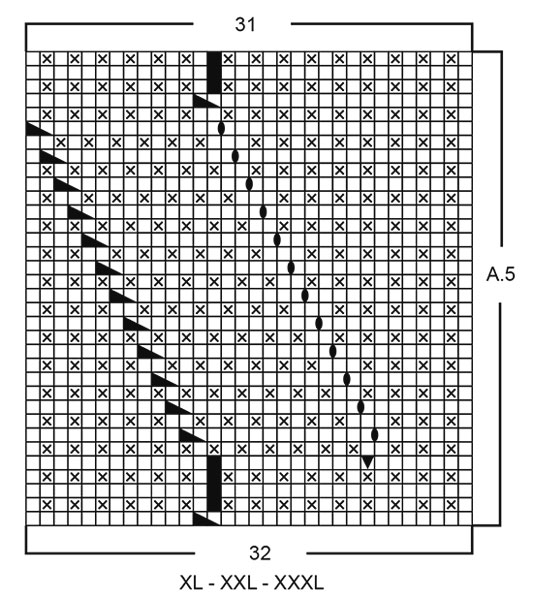
|
|||||||||||||||||||||||||
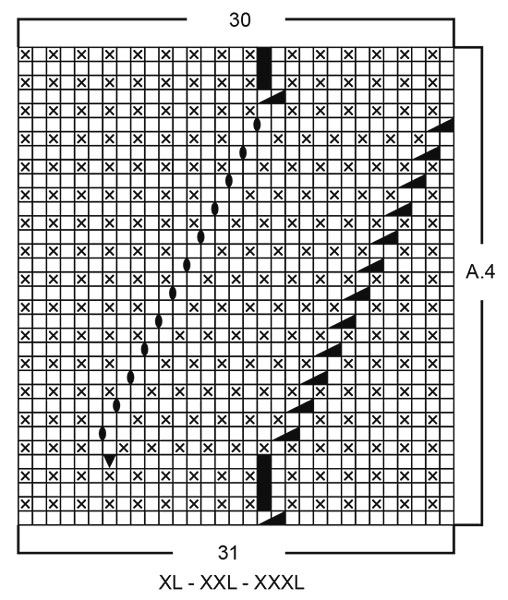
|
|||||||||||||||||||||||||

|
|||||||||||||||||||||||||

|
|||||||||||||||||||||||||
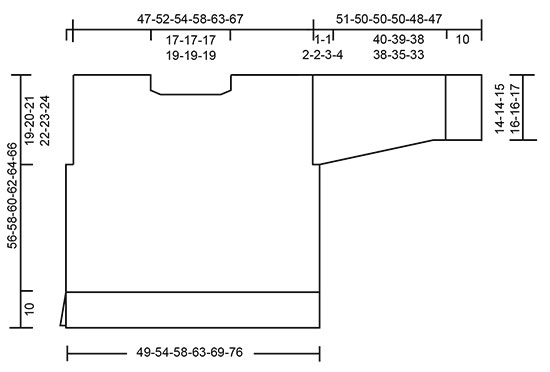
|
|||||||||||||||||||||||||
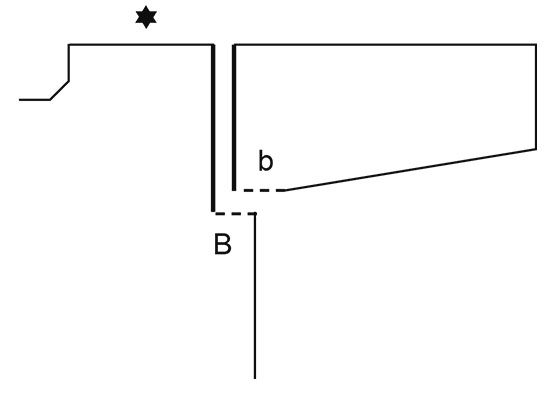
|
|||||||||||||||||||||||||
|
Have you made this or any other of our designs? Tag your pictures in social media with #dropsdesign so we can see them! Do you need help with this pattern?You'll find tutorial videos, a Comments/Questions area and more by visiting the pattern on garnstudio.com. © 1982-2024 DROPS Design A/S. We reserve all rights. This document, including all its sub-sections, has copyrights. Read more about what you can do with our patterns at the bottom of each pattern on our site. |
|||||||||||||||||||||||||








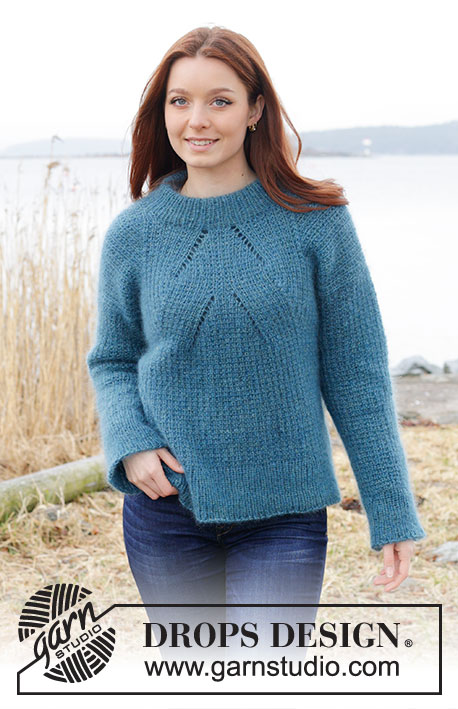


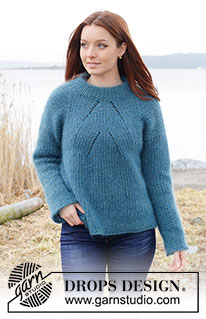





















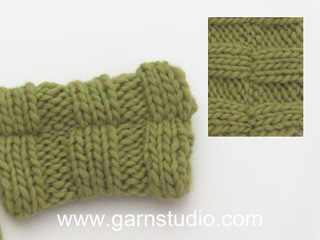







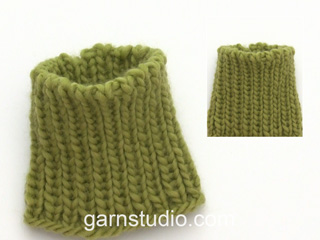


































Comments / Questions (4)
Bonjour, J'ai vu quelqu'un avec un pull présentant le même genre de motif, mais il me semble en côtes simples, et en plus je ne suis pas très à l'aise avec les "top down". Je n'ai pas trouvé sur votre site un autre modèle présentant le même genre de motif (que je trouve très beau), en commençant par le bas. En avez-vous un ? Merci pour votre réponse
08.02.2024 - 18:22DROPS Design answered:
Bonjour Sophie, retrouvez ici nos modèles de pulls tricotés de bas en haut avec un décalage de côtes, vous y trouverez peut-être l'inspiration. Bon tricot!
09.02.2024 - 07:41Modello molto bello, ma non riesco a trovare lo schema A.1.
30.12.2023 - 22:32DROPS Design answered:
Buongiorno Maria Luisa, lo schema A.1 è in fondo alla pagina di fianco allo schema A.4. Buon lavoro!
31.12.2023 - 13:33Mooie modellen maar weer gebreid van boven naar beneden. Jammer, niet voor mij weggelegd.
29.08.2023 - 13:10Océan
03.08.2023 - 14:34